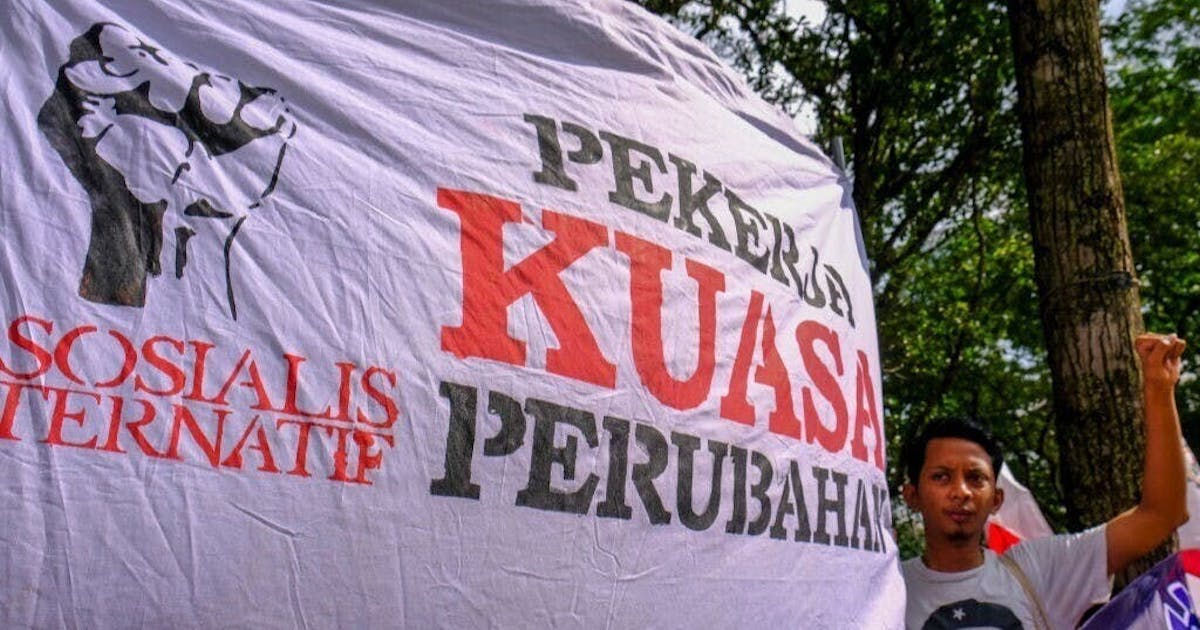In the early-1990s, Malaysia’s GDP per capita was on par with Poland and Croatia, but it’s only half that of the two countries today.
Profits too high
GDP comprises mainly wages (labor compensation) and profits (operating surplus).
The data suggests Malaysia’s economy fell behind because its wages are growing too slowly.
Note: Total wage data is obtained from The Conference Board, which defines the compensation of labor as comprising employee compensation and the mixed income of the self-employed, and profits as the compensation of labor deducted from GDP. This data may thus differ from official sources, but is used in this article for methodological consistency across countries.
Data source: World Bank
The per capita GDP difference between Malaysia and the two countries is similar to the difference in their wages and household consumption expenditure, again signifying how Malaysia’s economy has fallen behind because of its slow-growing wages and household consumption expenditure.
Malaysia’s wages are suppressed, with the aim of letting businesses earn higher profits, predominantly those in the manufacturing export businesses. As external demand and prices for exports grow, export earnings flow disproportionately into profits, enabling Malaysia’s industry value-added to grow as fast as Poland and Croatia.
However, for other domestic businesses reliant on domestic consumption expenditure, the slow-growing wages prevent their profits from growing faster, leading to Malaysia’s services value-added growing more slowly.
Suppressing wages has weakened the competitiveness of Malaysia’s manufacturing sector. After the 2008 economic crisis, the country’s high-tech manufacturing value-added fell, while nearby South Korea’s high-tech manufacturing expanded further.
Higher wages lead to more motivated and innovative workers, and provide the impetus for businesses to invest in innovation in order to be more cost-efficient, and to thereby produce higher-value products to grow the economy faster. South Korea’s higher wages thus spur higher-value development.
Data source: World Bank
Higher profit share leads to lower growth
Countries with higher wage shares (and lower profit shares) have higher economic growth; Malaysia’s economy is thus growing more slowly.
When Croatia and Poland’s GDP per capita were at the level of Malaysia today, in 2004 and 2006 respectively, their profits were only about 80% that of Malaysia’s, and wages 20% higher. To balance Malaysia’s wage-profit ratio, its profits need to be reduced by 20% and wages raised by 20% more.
Minimum wage too low
Malaysia’s minimum wage is growing too slowly, leading to its average wage also growing slowly, and thus household consumption expenditure too.
Data source for minimum wage: Malaysia, other countries; data source for average wage: Malaysia, Poland
Up until 2007, Malaysia’s total wages were growing on par with Thailand, then it started growing faster. But then it suddenly stopped growing in 2013, after Malaysia and depressed its currency exchange further.
It was only in 2022 when Malaysia’s minimum wage was raised to RM 1,500, that its economy picked up.
Malaysia has thus been sabotaging its own growth by devaluing its currency and not growing its minimum wage.
As explained, in general for both Malaysia and Poland, every year in which minimum wage grows by US$10, total wages and household consumption expenditure grows by about 20% faster, and the economy grows by about twice as fast. Meaning, total wages and household consumption expenditure grows by about US$12 every month and the economy by about US$20.
READ NEXT: How Do Taiwan’s Wages Compare With Countries With Similar GDP per Capita?
TNL Editor: Michael Beltran (@thenewslensintl)
If you enjoyed this article and want to receive more story updates in your news feed, please be sure to follow our Facebook.
